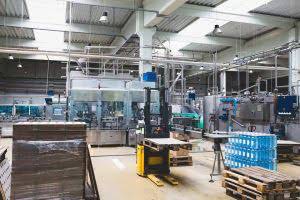
Additionally, management plans for future capex spending and the approximate useful life assumptions for each new purchase are necessary. If a manufacturing company were to purchase $100k of PP&E with a useful life estimation of 5 years, then the depreciation expense would be $20k each year under straight-line depreciation. Many depreciation methods allow by IFRS, but IFRS recommends the three methods mentioned in IAS 16. If you can determine what you paid for the land versus what you paid for the building, you can simply depreciate the building portion of your purchase price.

In addition to following historical trends, management guidance and industry averages should also be referenced as a guide for forecasting Capex. Capital expenditures are directly tied to “top line” revenue growth – and depreciation is the reduction of the PP&E purchase value (i.e., expensing of Capex). The average remaining useful life for existing PP&E and useful life assumptions by management (or a rough approximation) are necessary variables for projecting new Capex.
Using depreciation to plan for future business expenses
Depreciation is an accounting method that companies use to apportion the cost of capital investments with long lives, such as real estate and machinery. Depreciation reduces the value of these assets on a company’s balance sheet. The four depreciation methods include straight-line, declining balance, sum-of-the-years’ digits, and units of production. There are different methods used to calculate depreciation, and the type is generally selected to match the nature of the equipment. For example, vehicles are assets that depreciate much faster in the first few years; therefore, an accelerated depreciation method is often chosen.
- The expenses that charge during the period (monthly or yearly) are recorded in the company’s income statement.
- Once repeated for all five years, the “Total Depreciation” line item sums up the depreciation amount for the current year and all previous periods to date.
- The double declining balance method is often used for equipment when the units of production method is not used.
- Your business’s depreciation expense reduces the earnings on which your taxes are based, reducing the taxes your business owes the IRS.
- But in the absence of such data, the number of assumptions required based on approximations rather than internal company information makes the method ultimately less credible.
- Vehicles, equipment, office furniture, computer hardware, and real estate are the most common depreciable assets for small business owners.
- Learn financial statement modeling, DCF, M&A, LBO, Comps and Excel shortcuts.
Therefore, companies using straight-line depreciation will show higher net income and EPS in the initial years. Impact on your credit may vary, as credit scores are independently determined by credit bureaus based on a number of factors including the financial depreciation expense meaning decisions you make with other financial services organizations. Alternatively, you wouldn’t depreciate inexpensive items that are only useful in the short term. Buildings and structures can be depreciated, but land is not eligible for depreciation.
Depreciation expense definition
Businesses also have a variety of depreciation methods to choose from, allowing them to pick the one that works best for their purposes. So, when you recognize depreciation expenses in the financial statements, the expenses in the income statement will increase, and assets in the balance sheet will decrease. As a result, some small businesses use one method for their books and another for taxes, while others choose to keep things simple by using the tax method of depreciation for their books. The number of years over which you depreciate something is determined by its useful life (e.g., a laptop is useful for about five years). For tax depreciation, different assets are sorted into different classes, and each class has its own useful life. If your business uses a different method of depreciation for your financial statements, you can decide on the asset’s useful life based on how long you expect to use the asset in your business.
- To help you get a sense of the depreciation rates for each method, and how they compare, let’s use the bouncy castle and create a 10-year depreciation schedule.
- This allows the company to write off an asset’s value over a period of time, notably its useful life.
- The process of allocating the expenses of purchasing fixed assets for the period of time is call depreciation.
- Depreciation is a fixed cost using most of the depreciation methods, since the amount is set each year, regardless of whether the business’ activity levels change.
- The units of production method recognizes depreciation based on the perceived usage (“wear and tear”) of the fixed asset (PP&E).
- It acts on the premise that some assets are more productive during the first year and significantly show a reduction in performance over the course of years.
The recognition of depreciation is mandatory under the accrual accounting reporting standards established by U.S. Units of production depreciation is based on how many items a piece of equipment can produce. Over 1.8 million professionals use CFI to learn accounting, financial analysis, modeling and more. Start with a free account to explore 20+ always-free courses and hundreds of finance templates and cheat sheets. Salvage value can be based on past history of similar assets, a professional appraisal, or a percentage estimate of the value of the asset at the end of its useful life. The company decides that the machine has a useful life of five years and a salvage value of $1,000.
Modified accelerated cost recovery system
Returning to the “PP&E, net” line item, the formula is the prior year’s PP&E balance, less Capex, and less depreciation. Here, we are assuming the Capex outflow is right at the beginning of the period (BOP) – and thus, the 2021 depreciation is $300k in Capex divided by the 5-year useful life assumption. In a full depreciation schedule, the depreciation for old PP&E and new PP&E would need to be separated and added together. Capex can be forecasted as a percentage of revenue using historical data as a reference point.

Based on these assumptions, the depreciable amount is $4,000 ($5,000 cost – $1,000 salvage value). The difference is over or Under and Results in Deferred Tax Assets or Deferred Tax Liabilities. The Deferred Tax Assets or Liabilities are calculated by multiplying the net book value @ tax rate.

Leave A Comment